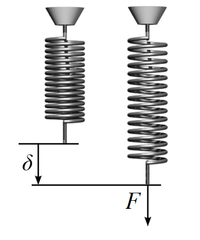
Photo from wikipedia
The typically-used element torsional stiffness GJ/L (where G is the shear modulus, J the St. Venant torsion constant, and L the element length) may severely underestimate the torsional stiffness of… Click to show full abstract
The typically-used element torsional stiffness GJ/L (where G is the shear modulus, J the St. Venant torsion constant, and L the element length) may severely underestimate the torsional stiffness of thin-walled nanostructural members, due to neglecting element warping deformations. In order to investigate the exact element torsional stiffness considering warping deformations, this paper presents a matrix stiffness method for the torsion and warping analysis of beam-columns. The equilibrium analysis of an axial-loaded torsion member is conducted, and the torsion-warping problem is solved based on a general solution of the established governing differential equation for the angle of twist. A dimensionless factor is defined to consider the effect of axial force and St. Venant torsion. The exact element stiffness matrix governing the relationship between the element-end torsion/warping deformations (angle and rate of twist) and the corresponding stress resultants (torque and bimoment) is derived based on a matrix formulation. Based on the matrix stiffness method, the exact element torsional stiffness considering the interaction of torsion and warping is derived for three typical element-end warping conditions. Then, the exact element second-order stiffness matrix of three-dimensional beam-columns is further assembled. Some classical torsion-warping problems are analyzed to demonstrate the established matrix stiffness method.
Journal Title: Nanomaterials
Year Published: 2022
Link to full text (if available)
Share on Social Media: Sign Up to like & get
recommendations!